双语阅读|共享单车是如何征服世界的
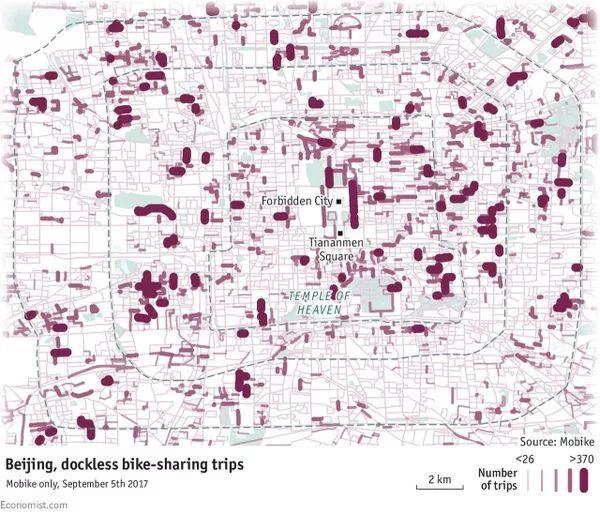
THE first bicycles were freed on July 28th, 1965. On the previous night Provo, a Dutch anarchist group, had put up flyers proclaiming that “the asphalt terror of the motorised bourgeoisie has lasted long enough”. A few dozen people had gathered at the bottom of the Spui, in central Amsterdam, along with some reporters. There were also some police; they thought the Provos were troublemakers.
1965年7月28日,第一批自行车获得解放。在前一天晚上,荷兰无政府主义者普洛佛到处张贴传单,他宣称“柏油马路被机动化资产阶级支配的恐惧“已经持续太久了”。十来个人聚集在阿姆斯特丹市中心的斯普伊广场上,同时还有一些记者和警察。在警察看来,普洛佛主义者就是一群惹是生非的人。
Roel van Duijn and Luud Schimmelpennink started painting three black bicycles white. “The white bicycle is the first free communal transport,” as their flyer put it. Once so transfigured, the bikes would simply be left on the streets; to make them free for all to use, the flyer said, “the white bicycle is never locked.” And that, it turned out, was a problem. After they were let loose on the streets, the white bikes were impounded by the police. A 1928 statute, they pointed out, required bikes to have locks. Ownership was not optional.
罗尔·范杜因和路德·施梅尔帕尼克正着手将三辆黑色自行车刷成白色。正如他们传单上说的那样“白色自行车是第一种免费的公共交通工具“。传单上还说到,自行车经美化后,就会被留在大街上,让人们自由免费地使用。但当自行车被零散地放到街上后,问题就来了,警察没收了这些车。警察称,1928年的法令规定自行车必须带锁。车辆的所有权不能自由选择。
A few days later, at a street meeting where Mr Van Duijn was painting another bike white, the police ordered him to stop, and the crowd to disperse. Mr Van Duijn stood his ground. A policeman whacked him with a truncheon. That made the white bikes something of a cause célèbre. More people joined the movement; more bikes were painted. But the police kept impounding them.
几天后,在一次街头会议上,警察命令正在给另一辆自行车上漆的范杜因停下,并企图驱散人群,但范杜因坚持自己的立场。一名警员用警棍重重地打了范杜因,这件事让白色自行车计划成了一项闻名遐迩的事业。越来越多的人加入了这项运动,越来越多的车被刷成了白色。但警察继续没收这些车辆。
Half a century later the streets of Beijing are full of bikes which are not white, but yellow, or orange and silver, or some other striking colour. These bikes are not public, but private, and they are equipped with cunning locks. But they are still, in their way, taking forward Provo’s dream.
半个世纪后的北京街头满是这样的自行车。不过,这些车不是白色的,而是黄色的、橙色和银色相间的、还有一些其他的亮色。它们是私人的而非公共的,并且安装了设计巧妙的锁。但是,它们以自己的方式推进了普洛佛的梦想。
The yellow bikes are from Ofo, so named because the letters look like a stick figure riding a cycle. The system started off a few years ago as a voluntary bike-sharing scheme on the campus of Peking University in Beijing. Today it claims to operate 10m cycles in some 200 cities worldwide. Mobike, its orange-and-silver rival, says it has deployed 7m of its bikes in China and abroad. Between them, they say, they are responsible for around 60m bike rides every day. Zhang Yanqi, Ofo’s operations boss, thinks China alone could support 300m rides a day.
黄色的车属于Ofo公司。之所以叫Ofo,是因为这几个字母组合起来看,非常像简笔画的人在骑车。这一系统开始于几年前北京大学的志愿共享单车计划。到今天,Ofo宣称已在世界范围内200多座城市内投放了一千万辆自行车。它的竞争对手,橙银相间的摩拜单车,则宣称已在国内外投放了7百万辆。他们说,两家公司平均每天要负责6千万次的骑行。Ofo首席运营官张严琪认为,中国可以独自承担每日3亿次的骑行。
The difference between these bikes and those in most of the public bike-sharing schemes familiar in cities around the world is that they do not have to be stuck into special docks at the end of the trip. Like the original white bikes they can be left wherever you like, and used wherever you find one. Unlike the white bikes, they do have locks. But now it is possible for Ofo and Mobike to give everyone keys, and charge them for their use.
这些共享单车与世界各地城市中类似的公共自行车的区别在于,骑行结束时,使用者无需将自行车停放到固定的泊车装置上。和最初的白色自行车一样,你走到哪里,就可以将车停到哪里;在任一地点找到车,都能立即使用。而与白色自行车不同的是,这些车有锁。但现在,Ofo 和 摩拜可能将对车辆使用收费了。
If you have the right app, you just point your phone’s camera at the QR code printed on the bike you want to use. The system unlocks it, gives you a half-hour ride and charges you one yuan ($0.15). That’s easily enough for most people: most trips on such bikes in Beijing are very short (see map). When you are through, just leave it. Soon enough another user will ride it away. If one doesn’t, someone will be offered an incentive to go and get it.
如果你有相应的app,你只要用手机相机扫描一下你想使用车上的二维码,系统会自动开锁。半小时的骑行将收取1元人民币(约0.15美元)。对于大多数人而言,这就足够了:在北京,大多数人骑行共享单车的距离都较短(见地图)。骑行结束后,你就可以离开。很快,另一位使用者就会将它骑走。如果没人骑的话,也会有获得激励的人来骑走。
Whether this model can work on the vast and global scale that Ofo and Mobike envision is not yet clear; that it is beyond anything Provo dreamed of is clear. The difference is the product of a half-century of progress, shaped by politics, commerce, technology and design, that has seen bike sharing become commonplace across the world.
Ofo和摩拜能否像设想的那样在全球范围内运行,目前还不是很明了,但显而易见的是它已经超越了普洛佛的设想。这是半个世纪以来发展的产物,是政治、商业、技术和设计共同塑造的产物。半个世纪以来,共享单车在世界范围内变得司空见惯。
In some ways little has changed. Cities are still car-dominated, still congested, still polluted. But the spread of bike sharing has made millions of lives a bit easier and a bit better. And it resonates with other changes in the world today. In more and more realms of life the convenient ad hoc access provided by digital systems is taking the place of the assured access once offered by personal ownership. Streaming beats records; the cloud beats the hard disk; credit beats cash.
从某些方面看,很多事情并没有改变。城市仍然由汽车主导,交通拥堵,环境污染。但共享单车让百万人的生活改善了一点儿,容易了一点儿。它和当今世界的很多改变是异曲同工的。生活中越来越多的领域里,数字系统提供的便捷化临时使用渠道正在取代由所有权决定的确定的使用渠道。流媒体打败了录音带,云存储击败了硬盘,赊购战胜了现金支付。
Bicycle thieves
自行车贼
For much of the 20th century, owning your first bicycle was a definitive rite of passage. Before smartphones, that bike was typically both the most valuable and most liberating piece of property a child might own. It was also a peculiarly vulnerable one.
20世纪大部分时期,拥有一辆自行车是一种重要的成人仪式。自行车是手机出现前,一个孩子可以拥有的,最具价值也是最不受约束的个人财产。然而,它也是特别脆弱的一种。
Official figures tend to downplay bike theft; typically perhaps one such crime in five gets reported to the police. If that is so, roughly 1.5m bicycles are stolen in America every year. A recent study in Montreal found that half of all cyclists have had bicycles stolen. This is in part because stealing bicycles piecemeal is oddly easy; the loot itself provides the getaway.
官方数据似乎有意淡化偷盗自行车的问题,尤其是只有五分之一的自行车被盗案会报警。如果事实真是如此,那么美国大约每年就有150万辆自行车被偷。最近蒙特利尔的一项研究发现,一半的自行车用户都被偷过车。这一定程度上是因为,零碎地偷自行车出奇的容易,因为偷来的自行车本身可用作逃跑的工具。
Given that such thefts are typically discovered exactly when the bike is needed, the crime is an urgently irksome one—and one which plays a significant part in stopping people from cycling, or giving the pastime up. According to that Montreal study 7% of victims never replace their bikes at all. Your correspondent vividly remembers both the thrill of getting a brand new BMX for his 13th birthday and the heartache of having it stolen 11 days later. It was well over a decade before he owned another bike.
由于发现自行车被偷往往是在需要用车的时候,这样的犯罪十分恼人,它极大地阻止了人们使用自行车,并让他们放弃娱乐。据蒙特利尔研究显示,7%的受害者不会重买一辆自行车。笔者就清楚地记得13岁生日那年得到一辆崭新的BMX自行车时内心的惊喜,以及11天后,发现车子被偷时的心痛。直到10年后,我才重新有了一辆自行车。
Such thefts are not just privations; they are temptations. In Vittorio De Sica’s neorealist classic, “Bicycle Thieves” (1948), the bike that a working-class man depends on for his livelihood is stolen. In a moment of weakness, he tries to steal another bike, and is humiliated in front of his son. “Beijing Bicycle” (2001), directed by Wang Xiaoshuai, told a similar story; an upwardly mobile striver tries lifting a bike after his own goes missing. He is dragged off to the police station.
这种偷盗不仅是出于生活困窘,还是因为一种诱惑力。在维托里奥·德·西卡的新现实主义经典小说《偷自行车的人》(1984)中,一个工薪阶层男子赖以谋生的自行车被偷了。在虚弱无助的时候,他企图偷一辆车,却当着儿子的面被羞辱。王小帅2001年执导的电影《十七岁的单车》也讲述了一个相似的故事; 一个努力上进的快递员在自己用以谋生的自行车不见之后,试图偷窃另一辆,最终他被拖进了警局。
One of the fundamental attractions of shared bikes is that they breach such chains of theft and temptation. There will always be a bike when you need it, regardless: no property, no theft. That was the insight which, in 1989, led Ole Wessung to reinvent Provo’s idea. Standing in front of the empty space on a Copenhagen pavement where his bike should have been, he found himself considering taking someone else’s cycle to replace it. It was the fifth bike he had had stolen in three months. Instead, he walked home turning over a new idea in his mind. Maybe insurance companies could be persuaded to sponsor a free-bike scheme so that they would not have to pay out for as many thefts.
共享单车最吸引人的地方在于它打破了盗窃与诱惑之间的联系。你需要用车时总可以找到车,没有所有权,不会有偷盗。正是这种想法促使Ole Wessung 在1989年时试图改良普洛佛的创意。他站在哥本哈根人行道前的空地上,他的自行车就停在那儿,他发现自己正考虑用别人的自行车代替自己那辆。这是三个月内他偷窃的第五辆车了。然而,在走回家的路上,他反复考虑着一个新的想法。或许,他可以说服保险公司资助一个免费自行车计划,这样他们就不用为这么多自行车被盗赔保了。
They couldn’t. But, slowly, the city authorities were. The “Bycyklen” scheme, as it was called, took until 1995 to get rolling (Mr Schimmelpennink, whose post-Provo attempts to get Dutch politicians to buy into bike-sharing had met with little success, was a consultant on the project). When it did, its success had three crucial elements. The first was official involvement. Where the Provos worked in opposition to the city council, Bycyklen had the support of not just the Copenhagen municipality but the ministries of tourism, environment and culture as well.
保险公司并不愿意。但是,逐渐地,市政府却同意了。一个名为“Bycyklen”的计划直到1995年才开始启动。(施梅尔帕尼克先生成了该计划的顾问,他曾在普洛佛之后,尝试让荷兰政治家们入股共享单车,但并未成功)。该计划实施后十分成功,这主要归因于三个重要方面。首先是官方参与。过去,不同于普洛佛主义者和官方作对,Bycyklen不仅得到了哥本哈根市政府的支持,同时还有旅游部、环保部和文化部的支持。
Second, Bycyklen recognised that a bike is a canvas for commerce. It roped in corporate sponsors, including Coca-Cola and the Danish Girl Scouts, to advertise on the bikes. Last, and perhaps most important, the bikes were specially designed to be less attractive to thieves. Their parts would not fit on a standard bike. They were also rather ugly.
第二,Bycyklen计划认可自行车的商业价值。它和可口可乐、丹麦女童子军等赞助商合作,为共享单车打广告。最后一点,也是最为重要的一点,单车被设计得不再那么吸引小偷。车上的零部件不适用于其他标准的自行车,而且单车的样子很丑。
The bikes were free, but had a rudimentary deposit system modelled on supermarket trolleys. Riders inserted a 20 kroner ($3) coin to unlock a bike from one of the stands where they were housed; they got it back when they docked it at another. This was not much of a deterrent to abuse. Upon first encountering the bikes in 2005, your correspondent rode one far outside its designated zone and lugged it up four flights of stairs before, confronted by his mortified host, he took it back down again and abandoned it on a grassy verge.
单车可以免费使用,但和使用超市手推车类似,有一个基本的定金支付系统。骑车人只需放入一枚20克朗的硬币(约合3美元),就能自动解锁一辆固定停放站内的共享单车;当他们将单车停放在另一个站点时,就可以取回这20克朗。但这样做,也并不能杜绝共享单车被滥用。2005年,笔者第一次使用共享单车,我骑着它远离了指定区域,费劲地把它拖上四层楼梯,结果撞见了倍感丢脸的房东,于是,笔者又把它拖下了楼,丢在了路边。
Despite such deviant behaviour by a feckless few, Bycyklen was something of a success. Bike thefts fell from 27,000 in 1989, when Mr Wessung conceived of his plan, to just under 18,000 in 1997, two years after the scheme got going. The ugly bikes stayed on Copenhagen’s streets until 2012, when the city replaced the old clunkers with a fleet of spiffy e-bikes.
虽然少数窝囊的人会干出这么变态的事,Bycyklen计划还是成功了。1997年,该计划实施两年后,自行车盗窃案降到了18000起以下,而1989年Wessung 先生酝酿这一计划时,盗窃数为27000. 这种外形丑陋的共享单车一直活跃于哥本哈根街头,直到2012年,政府用整洁时髦的电子自行车取代了这些老旧的单车。
Bycyklen inspired a handful of similar efforts. But the trend was slow to grow. Amid some successes (by the mid-2000s many German cities had such schemes) there were many let-downs. Failure often came from not making the bikes sufficiently unattractive and thus providing a resource for thieves, rather than an alternative to stealing. The “green bike” scheme started in Cambridge, England’s most cycling-friendly city, in 1993 had most of its bikes nicked by the end of the first weekend. In Portland, Oregon in 1994 two friends, inspired by a passage about Provo’s white bikes in a documentary, gathered some bicycles and painted them yellow. The bikes quickly vanished. They put more on the street. More disappeared. Other cities tried, too: Spokane (purple), Madison (red), Boulder (green), Tampa (orange), Minneapolis (yellow), Fresno (yellow). All failed, writes Peter Jordan in his book, “In the City of Bikes”, which tells the story of cycling in Amsterdam and elsewhere.
Bycyklen计划鼓舞了一系列类似的尝试,但发展趋势较为缓慢。在一些成功的案例外(在2000年年中时,许多德国城市都有了类似的计划),还有许多令人沮丧的例子。失败的原因往往是,自行车设计得不够缺乏吸引力,于是,便成了小偷的偷窃资源,而不是另一种偷盗选择。1993年,”绿色单车”计划于剑桥启动,这是英国最适宜骑自行车的城市。但到第一周结束时,大部分单车都被偷了。1994年,美国俄勒冈州波特兰市的两个好朋友,受纪录片中普洛佛白色单车计划的启发,收集了一些自行车,将它们刷成了黄色。这些车很快就不见了。两人继续在街上投放更多车辆,消失的也更多了。另外一些城市也进行了尝试:斯波坎(紫色单车),麦迪逊(红色单车),波尔得(绿色),坦帕(橙色),明尼阿波利斯(黄色),弗雷斯诺(黄色)。这些城市都失败了,皮特·乔丹在其《自行车之城》一书中写到,这本书讲述了阿姆斯特丹及其他一些地方的自行车故事。
What was needed was a high-profile, well-designed scheme big enough to weather endemic larceny and mounted by someone determined to make a go of it. That was what Paris provided in 2007, when on the day after Bastille Day Bertrand Delanoë, the mayor, inaugurated Vélib. Not everyone thought this wise. “Paris n’est pas Amsterdam,” Le Monde, a newspaper, had sniffed the day before. This turned out to be true, but not the way the paper meant it. Where Amsterdam’s first scheme had failed, Vélib was a triumph.
真正需要的是一个大型的计划,立场明确,设计完好,足以承受普遍的盗窃现象;同时,还需有人来组织,意志坚定地将其推行,而这正是巴黎在2007年所做的。巴士底狱日的第二天,巴黎市长贝特朗 ·德拉诺埃启动了 Vélib计划。并不是所有人都认为这是一个明智的决定。“巴黎不是阿姆斯特丹”,《世界报》在前一天就已对此嗤之以鼻。《世界报》说对了,但并不完全是它所认为的那样,巴黎的确不是阿姆斯特丹,阿姆斯特丹的第一个单车计划失败了,而Vélib却成功了。
That was in part because Mr Delanoë did not just want to convert existing cycle owners into cycle sharers; he wanted more people cycling. Paris had added 261km of bike lanes between 2001 and 2007. “They were rebuilding the city to be friendlier to bikes...at a massive scale and rapid speed,” says Kate Fillin-Yeh of America’s National Association of City Transportation Officials. Bike-sharing works best when matched with a good infrastructure network, she says: call it a virtuous cycle.
德拉诺埃先生能够成功,一定程度上是因为,他不仅是想将已有的自行车所有者变成分享者,他想让更多的人骑自行车。2001至2007年间,巴黎增设了261公里的自行车道。“这些大规模建设的车道正迅速地将巴黎改造得更适于骑行。”美国城市交通协会官员 Kate Fillin-Yeh如是说道。她说,当基础设施网络建设齐全时,共享单车就能充分运作,这是一个良性循环。
Holding back the gears
开启减速档
Mr Delanoë had also learned from Copenhagen. Instead of spending city money, the mayor offered 1,628 outdoor-advertising spaces to JC Decaux, an advertising company which had experience with a similar, but much smaller, scheme in Lyon, if it would operate the scheme. Unlike Copenhagen’s the system was not free; but it was cheap, and credit cards and electronic docking stands made it convenient. New embedded sensors made the bikes easier to track and helped identify patterns of use.
德拉诺埃先生也向哥本哈根求取经验。他不花市政府的钱,而是答应JC Decaux广告公司(该公司曾在里昂运作过一个小型的共享单车计划,有相关经验),如果他们愿意运作这项计划,就给他们1628个露天广告空间。与哥本哈根不同的是,巴黎的这一系统并不免费,但很便宜,另外信用卡支付和电子停车点也十分便捷。单车上新嵌入了传感器,便于追踪车辆,有助于确定使用状态。
None of this stopped enterprising thieves; 3,000 bikes were stolen in the first year alone, far more than expected. But that did not stop citizens and tourists alike clocking up 27.5m rides over the same period. Cities around the world—including London—decided the idea’s time had come. “Paris is a city people pay attention to in a way they don’t to Lyon,” says Ms Fillin-Yeh. In the 12 years before Vélib some 75 bike-share schemes were set up. In the ten years since nearly 1,600 have come on line, according to a database maintained by Russell Meddin of bikesharingmap.com (see chart).
这些措施并不能阻挡有进取心的小偷们。仅在运作的第一年里,就有3000辆车被盗,远超预计。但同样是这一年间,市民和游客们的骑行次数却达到了2750万次。全世界的城市——包括伦敦——都认为“共享单车”的时代来了。“和伦敦相比,巴黎是一个更引人注目的城市”Fillin-Yeh女士说。在Vélib 计划兴起之前的12年间,共有过75项共享单车计划。而共享单车地图网的Russell Meddin所管理的数据库显示,Vélib 计划之后的10年间,有近1600项共享单车上线运行。
For all this eventual success, bike-sharing has done little to curtail the “asphalt terror of the motorised bourgeoisie”, as Provo had promised. Bike-sharing rides typically replace journeys made on foot or using public transport, not journeys in cars. Resources for the Future, a think-tank, found that the system in Washington, DC has had only a “marginal impact” on congestion. That said, the think-tank reckons that the 4% drop in congestion it found saves $182m a year in shorter travel times and less need to buy fuel.
尽管最终共享单车取得了成功,但是却并未能削弱“柏油马路被机动化的资产阶级支配的恐惧”,正如普洛佛所预言的那样。 人们骑共享单车主要是替代步行和公共交通,而不是需要开车的旅途。未来智库发现,华盛顿特区的共享单车系统对缓解交通拥堵只起到了边缘性的作用。智库承认,拥堵率下降4%,通行时间和燃油需求的减少每年可节约1.82亿美元。
Health benefits are harder to quantify, especially in smoggy cities like Beijing. Mobike has found that its bikes are used more or less as much when the air is really bad as when it is not, suggesting that the good done by exercise may be undone by heavy breathing in toxic air. But in less-polluted cities the gains from exercise are larger than the risks from road accidents or air pollution, according to a study of Barcelona in the British Medical Journal.
共享单车的健康益处难以量化,尤其是在像北京一样雾霾严重的城市。摩拜公司发现,不管空气质量是好是差,其单车的使用率几乎是相同的,这意味着,骑自行车锻炼带来的好处会被大量吸入有毒空气抵消。但《英国医学杂志》上的一项有关巴塞罗那的研究显示,在环境较好的城市,骑单车获益的可能会远高于出车祸和受空气污染影响的概率。
Back on the chain gang
回归链条模式
As for ownership, the rise of Mobike and Ofo suggests, at the moment, that it is venture capitalists (or, eventually, shareholders) who will own the urban bicycles of the future. Public bike-share systems, even with the generous support of advertisers, have rarely been able to cover all their costs. But executives at both Ofo and Mobike insist that their smartphone-based dockless business models are sound. If they stopped expanding tomorrow, they say, their balance sheets would be a sea of black.
从所有权来看,目前摩拜和Ofo的兴起意味着,敢于冒险的资本家(或者,最终持股的人)掌握着城市自行车的未来。即便拥有广告商的大力支持,单车共享系统也无法支付所需的全部费用。但两家公司的主管们坚称,其依托手机客户端的无桩共享单车运营模式是十分健康的。他们表示,如果明天停止扩展业务,那公司的资产负债表将是一片赤字。
As it is, both give away free rides to attract and retain riders and are engaged in a bloody war for market share. Their investors are keen for them to merge. Analysts from Hong Kong to New York are sceptical they can make money selling rides for 1 yuan even as the companies insist that they can. But they could in time add to their revenues by turning their bike networks into data generators, creating a new way of defining the city’s pulse (see map of London). Digital companies already know a lot about online behaviour; bikes help them track off-line behaviour, too. Bike pick-up and drop-off data can show which shops and cafés are most popular—and whether online ads have had any effect on off-line behaviour.
诚如其所言,两家公司纷纷提供免费骑来吸引和留住用户,为争夺市场份额,身陷血战。而投资人热切地盼望着两家公司能够合并。尽管香港纽约的分析人士都怀疑,一元骑一次的价格能否赚钱,但两家公司都坚称自己可以。他们将自行车网络转变成数据生成器,从而创造了一种新的定义城市脉搏的方式(参见伦敦地图),他们能够增加收入。数码公司已经相当了解人们的网络行为,而自行车则帮助他们追踪线下行为。停拿车辆的数据可以表明哪些商店和咖啡馆是最受欢迎的,以及在线广告是否影响了线下行为。
Mobike says it does not share data commercially. But it is working with think-tanks, universities, research institutes and the World Bank to put bikes and the information they provide about their users and environment at the service of better city-planning. Such systems could yet cut emissions and congestion and make the world’s cities more pleasant places to live.
摩拜公司称他们并未通过分享数据谋利。但它与智库、大学、研究机构以及世界银行合作,为它们提供用户以及环境的信息,从而让共享单车系统为更好的城市规划服务。这些系统可以缓解污染和拥堵,使城市更宜居。
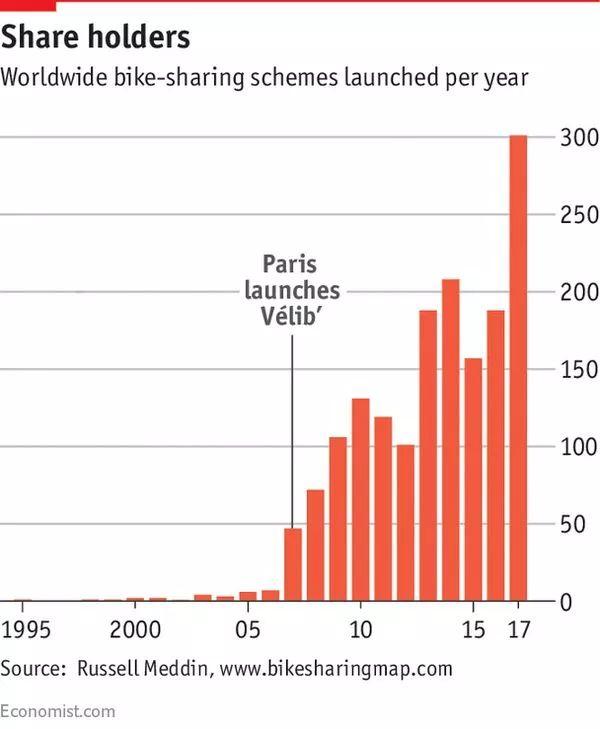
Dockless bike-share schemes, however, bring with them a new and unprecedented problem: bicycles so numerous that even theft cannot keep the streets clean of them. The things pile up in parks, courtyards, alleyways and any available open space, often dumped carelessly on top of each other, sometimes making it difficult for pedestrians to walk down a street unimpeded. At least seven major Chinese cities have stopped allowing any new shared bikes on their streets. In August Wandsworth, a London borough, seized dozens of bikes dumped on its streets by oBike, a Singaporean firm. Singapore itself impounded 135 bikes earlier this summer. Amsterdam, true to form (and with such high bike-ownership rates that it sees no need to promote yet more bicycling) has banned dockless bike-share.
然而,无桩共享单车计划同时也带来了前所未有的新问题:数量庞大的共享单车充溢街道,连偷车都没法帮助清理;单车在公园、庭院、人行道以及所有可能的公共空间中堆积,而且往往是乱堆乱放,使得行人没法畅通无阻地过一条街。中国至少有七座城市已禁止继续投放新车辆。今年八月,旺兹沃斯(属于伦敦的自治区)没收了几十辆在街上随意停放的o单车。这些单车属于一家新加坡的公司。而新加坡早在夏初的时候就已没收了135辆单车。而阿姆斯特丹一如既往地禁止了无桩共享单车。(事实上,阿姆斯特丹的自行车所有率极高,已不必再推广骑行了)
Still, some in the Netherlands still dream of making bikes ever more free—creating a system in which bikes are not owned by people, or cities, or by companies using them as data-sources, but by themselves. Marcel Schouwenaar, a Dutch designer, has a plan called Fairbike which gives bikes blockchains. Blockchains, the software innovation that makes cryptocurrencies possible, are distributed ledgers which keep untamperable records of actions and transactions. Mr Schouwenaar thinks that the “smart contracts” blockchains allow—agreements that can monitor the fulfilment or breach of any conditions they stipulate—could create self-managing fleets of bikes.
但是,一些荷兰人仍希望自行车的使用能够更自由。他们想设计一个共享系统,其中,自行车是归人们自己所有,而不是他人、城市所有,或者是将其用作数据来源的公司所有。一名荷兰设计师,Marcel Schouwenaar制定了一个名为“公平单车”的计划。在该计划中,单车系统使用区块链模式。区块链是一种使用加密货币的新型软件,它是一种能够保证操作和交易行为不受干涉的分类账。Schouwenaar先生认为,依托区块链这种“智能合同”,用户任何满足或违背既定条件的行为都会受到监督,从而让他们建立起自主的单车管理方式。
Using Fairbike would be like using Mobike. But instead of passing on your money to a central organisation, the bikes would hold on to it. Once a community set such a system up it would pay for its own maintenance—and, when enough funds had been collected, new bikes. Systems used a lot could thus both heal their wear and tear and increase their population. The repair jobs and new bike orders would be assigned on a lottery basis to registered bike shops. Theft would finally become impossible, at least technically; wherever a Fairbike was taken it would still own itself. There would, however, be a certain loss of access.
公平单车的使用类似于摩拜单车。但是使用者不必向中央管理机构交钱,钱一直为车辆所有。若一个社区建立起这种单车共享模式,它就可以自己支付维护费用;同时,当系统筹集到足够的资金,就可以有新的车辆。系统因此可以自行修复车辆磨损并增加使用人数。具体的维修工作以及新车辆的购买就会随机地交给登记注册过的自行车商店。至少从技术上说,自行车偷盗也不再可能。不论从哪里取走一辆公平单车,单车始终是属于自己的。当然,这样也可能减少一定的使用渠道。
Mr Schouwenaar hopes to pilot Fairbike next summer in Rotterdam, friendlier to such schemes than Amsterdam. But he respects the idea’s heritage. “We try to get very close to the original Provo bikes in Amsterdam,” he says. The idea is to bring together the idealism and bottom-up approach of the Dutch anarchists and the technological advances of the Chinese mega-firms. Bicycles of the world: unite! You have everything to gain from your blockchains!
Mr Schouwenaar先生希望能在明年夏天实行该计划,试点城市选在了鹿特丹,比阿姆斯特丹更适合共享单车的城市。但他也十分尊重这一理念的传统。“我们会尝试向普洛佛最初在阿姆斯特丹的设想靠近”。他的想法是将荷兰无政府主义者的理想主义与自下而上的理念和中国大公司的技术创新相结合。全世界的自行车联合起来吧!你将从区块链中获得一切!
编译:YuYue
编辑:翻吧君
来源:经济学人(2017.12.19)
阅读·经济学人
欧洲铁路运输市场开放 国有铁路企业压力山大
悔悟为优步在伦敦市场赢来利好
抖音风靡全球,微信心烦意乱
低调的数字货币平台Coinbase欲明年上市
“巨无霸指数”显示各国货币对美元的汇率变化
创新型“微电网”为发展中国家提供电网新思路
全球海外医疗旅游业蓬勃发展
美国科技巨头划出“零存活区”创业企业无处可逃
不小戒而大惩,美国企业高管纷纷下台
![]()
翻吧·与你一起学翻译
微信号:translationtips

长按识别二维码关注翻吧





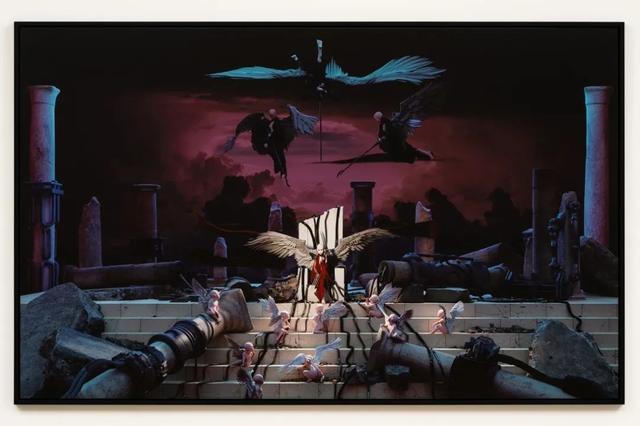



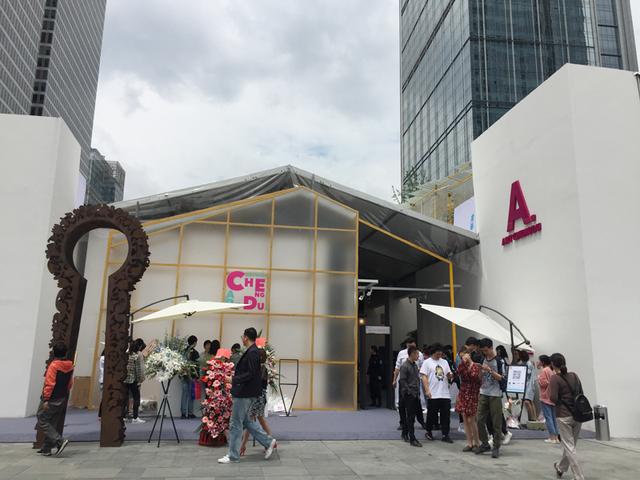



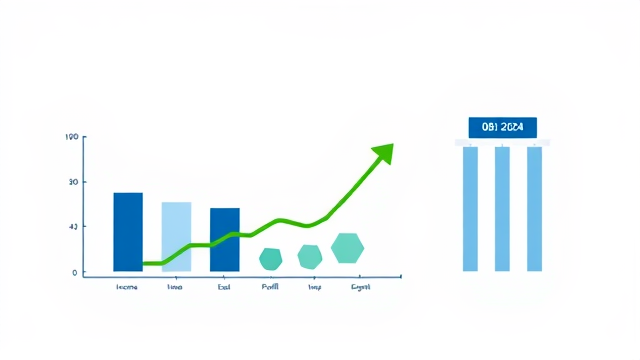
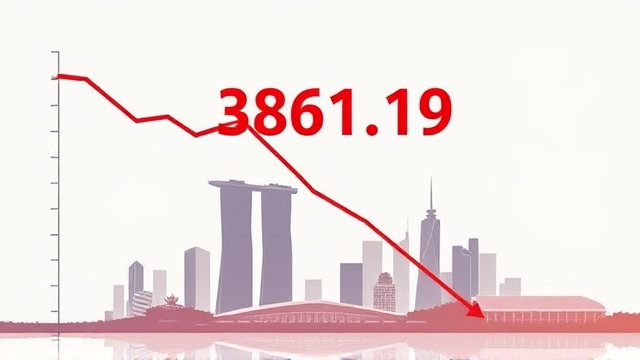





评论